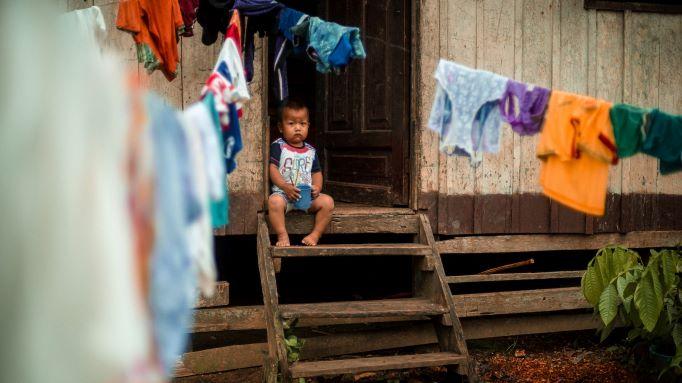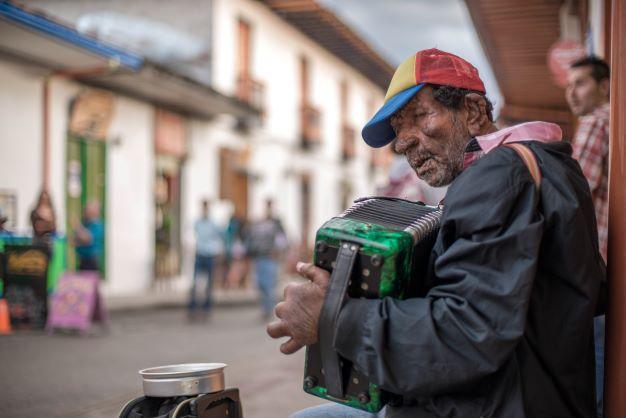
Before COVID-19 hit, Latin American and Caribbean (LAC) countries already displayed plenty of health inequalities rooted in the Social Determinants of Health (SDH), the conditions in the social environment – where people live, learn, work, and play – that affect health outcomes. Typically, this includes income, education, occupation, and social support, among others. In the journey to transform the health systems of the region and make them fit for the ‘post-Covid-19’ reality, possible solutions should aim to overcome these inequalities and integrate broader perspectives into health (care). In this article, I offer some suggestions.
Some of the LAC inequalities at a glance
Whether based on household survey data or combined data sources, several LAC countries have some of the highest levels of income inequality in the world, and this already for decades. True, till Covid hit the world, income inequality was slowly going down in the region, except for a few countries (Brazil, Colombia, Argentina, Honduras) where inequality actually deteriorated. When Covid hit LAC, extreme poverty increased from 81 million to 86 million between 2020 and 2021, a 27-year setback. Also, inequality increased breaking with the (overall) downward trend described above, with women, rural and indigenous people, and children being affected most.
As for occupation, by May 2020 around 16.6 percent of adults had permanently lost their jobs across 13 countries in LAC, with those in the Andean subregion (such as Colombia, Ecuador, and Peru) being the most affected. More than 70 percent of households had seen their incomes decline in these Andean countries according to a recent (2020) WB report, ‘The cost of staying healthy’.
Furthermore, ‘one of the world’s largest migration flows’ takes place in the region (and beyond). An estimated 4.3 million of Venezuelan refugees and migrants live in other countries in LAC. Many of them have experienced the loss of employment and resulting inability to access healthcare services. Some of the receiving countries face(d) the challenge of addressing the needs of this – often vulnerable – population, amid a major public health crisis like COVID-19 (which isn’t over yet). The lockdown worsened the mental health status of Venezuelan migrants disproportionately, compared to the general population. Anxiety and depression disorders occurred more frequently among migrants and refugees facing difficulties to obtain food and employment – particularly for women. And of course, there are many other migrants in the region, amongst others the ones trying to make their way to Mexico and the US.
This is just a glimpse of the many (structural) SDH challenges in LAC. As noted above, the Covid pandemic further worsened an already dire situation in many countries in the region. And also in the health care system, the (nature of the) pandemic played a pernicious role (see below).
A syndemic also wreaking havoc in the health care system
Indeed, speaking of Covid, with just a tenth of the world’s population, LAC countries account (so far) for almost half of the cases and more than half of the deaths from COVID-19. The syndemic character of COVID 19 has been acknowledged around the world, but perhaps nowhere this was more clear than in this region. A ‘syndemic’ refers to an infectious disease interacting with non-communicable diseases & injuries (NCDIs) within vulnerable and socio-economically disadvantaged groups’. Therefore, it yields worse health and social outcomes than each of them could produce separately.
COVID-19 also unveiled that our health systems’ financial viability, particularly the one of health care providers, relies on sick people and the volume of treatments (and health care services in general), rather than on the real “health” status of people, obtained through prevention of NCDIs by different actors. The amount of people with NCDIs looking for health care services fell drastically during the lockdowns, with the profitability of health care providers following shortly after.
The SDH situation in LAC, coupled with the impact of Covid, including in the health care system, shows the urgent need for reimagining our health and social systems towards (more) social justice and equity.
Some possible ways forward
In this call to transform the health systems of the region some emerging solutions look promising. Value-based payment (VBP) and other alternative payment models, healthcare integrated networks, digital transformation in health, primary healthcare strengthening among others, all look like ways forward. Many of these are even ‘essential’.
However, some caution is needed when translating these approaches to our context. Some of them may actually exacerbate health and social inequalities, if not done in a careful way. Take value-based health care (and payment), for example. VBP is a payment approach that aims to promote enhanced population health management, which should in turn result in the improvement of health and/or global cost containment. A VBP model offers financial incentives to doctors, hospitals and other providers, by aiming for better health outcomes for patients to lower medical costs. Unlike in a fee-for-service payment model, the medical practice gets a financial bonus when health care costs go down because the patient is healthier and goes to the doctor or hospital less frequently. At least, that’s the theory. However, getting better health outcomes at a lower health care cost, as VBP aims to do, might be challenging for providers when the people they need to see don’t have access to ‘sufficient, safe and nutritious food’ at all times (to meet their dietary needs), or when their feelings of isolation prevent them from proper self-care, for example.
As a result, health providers won’t embrace VBP models in settings where SDH boost adverse health outcomes, or – even worse – could trigger practices such as the adverse selection of the higher-risk, migrant or poorer populations by insurers and/or healthcare providers, thus reproducing and deepening social and health inequalities. In addition to this (necessary) shift from a fee-for-service payment system, two other (and complementary) approaches thus seem necessary.
Socio-sanitary coordination and social innovation in health
Indeed, we need to take a broader approach in order to get to more effective integration of social needs into health delivery care models, overcoming the forces of “market health” through value-based health and social care services, not just “value-based payments” proposals. “Paying for healthcare” approaches should incentivize the inclusion of social care in health care delivery in our inequitable contexts.
To be successful, this socio-sanitary integration should also rely on health information technology innovations and a diverse workforce, which should include social workers, community health workers, gerontologists, social care workers, and not only health and care workers. For healthcare organizations, this perspective implies a well thought-out design that implements an integrated care system by engaging a wide variety of stakeholders and establishing linkages and communication pathways between health care and social services providers.
At the health system level, this approach supposes the use of collaboration models, shared information, and technology solutions which manage to capitalize on key stakeholders on the ground, rooted in their communities. Indeed, communities and people want to be more than just “objects”, they are “subjects” when it comes to their own health, and should be treated as such. We need to overcome the (currently far too common) practices in which the actors who influence the so-called “structural determinants” (SDH) do not listen to, nor co-design solutions with those who work to address the ‘intermediary determinants’ (like food availability, behaviours and psychosocial factors, for instance).
In addition, it is just common sense for targeted interventions to involve the people of communities, where lived experiences and engaging knowledge reside. Put differently, we also need a social innovation in health approach. Social innovation in health, “as a community-engaged process that links social change and health improvement, drawing on the diverse strengths of local individuals and institutions”, fits the demands of health and social care transformation. After all, health and social systems are complex and adaptive systems and innovation is more effective when it emerges bottom-up. In the intersectional dialogue that social innovation fosters between governments, academic, social and health organizations, and communities, more fruitful (ànd frugal) solutions can emerge to address the unmet social and health needs of our disadvantaged communities. Indeed, solutions that take into account affordability, inclusiveness, and cost-efficiency come natural in the social innovation in health movement.
In conclusion, if we want to achieve better health and social outcomes for our (very) unequal Latin-American and Caribbean communities, which means tackling the causes of NCDIs, as well as the long-term impact of COVID-19, we can’t only come up with innovative biomedical technologies or solutions. The integration of value-based health and social care, and social innovation in health share a clear focus on outcomes, so perhaps together they can lead to more sustainable, equitable and fairer health solutions. Hopefully, these solutions can also balance the conflicts that arise between the necessary reform of our health systems and the inequitable social contexts in which they take place, while new government voices in the region are introducing, as expected, more structural changes in the social determination of health. In Colombia, my own country, for example.

Great reflection, thank you!
This informal worker seems to be affected by Hansen’s disease…